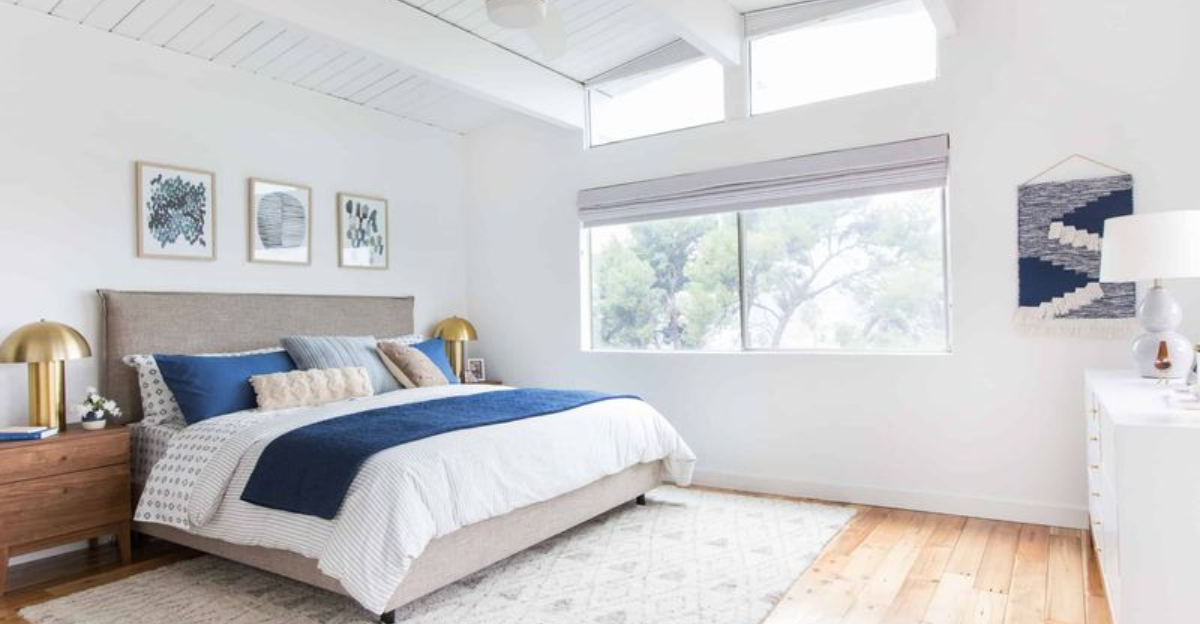Rugs can transform your bedroom from a simple sleeping space into a cozy sanctuary, but getting the placement right isn’t always intuitive.
Many homeowners struggle with rug positioning, leading to awkward layouts or impractical arrangements. I’ve compiled these essential rules to help you navigate the sometimes tricky world of bedroom rug placement with designer-level confidence.
1. Extend Beyond The Bed
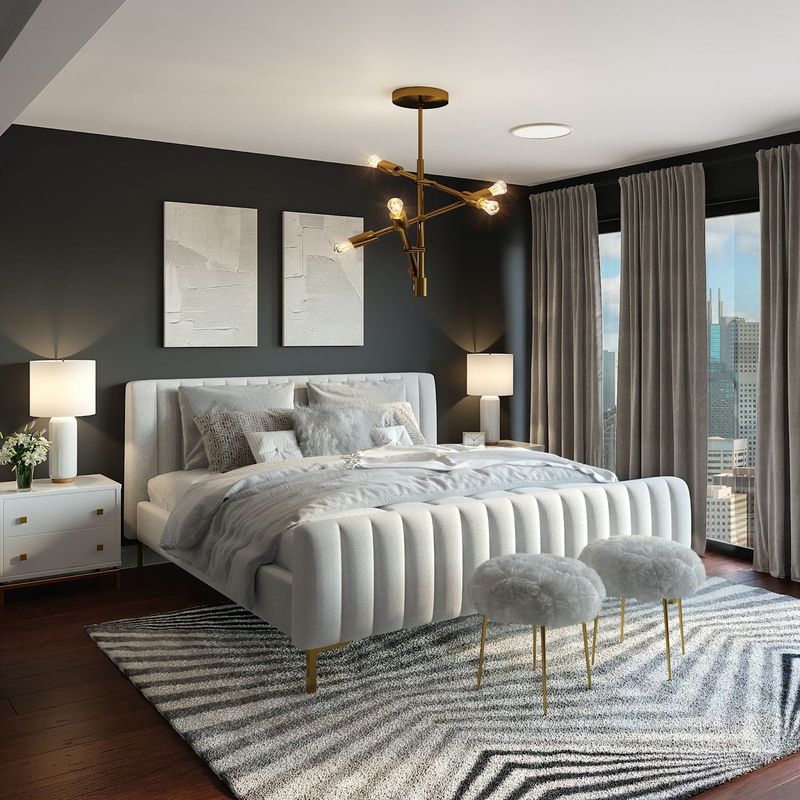
A bedroom rug should extend at least 18-24 inches beyond each side of your bed. This creates a soft landing for your feet in the morning while establishing proper visual proportions in the room. For a queen bed, aim for a minimum 8×10 foot rug. King beds typically require 9×12 foot rugs to maintain this extension rule. Anything smaller will look like a bath mat!
2. Center Under The Focal Point
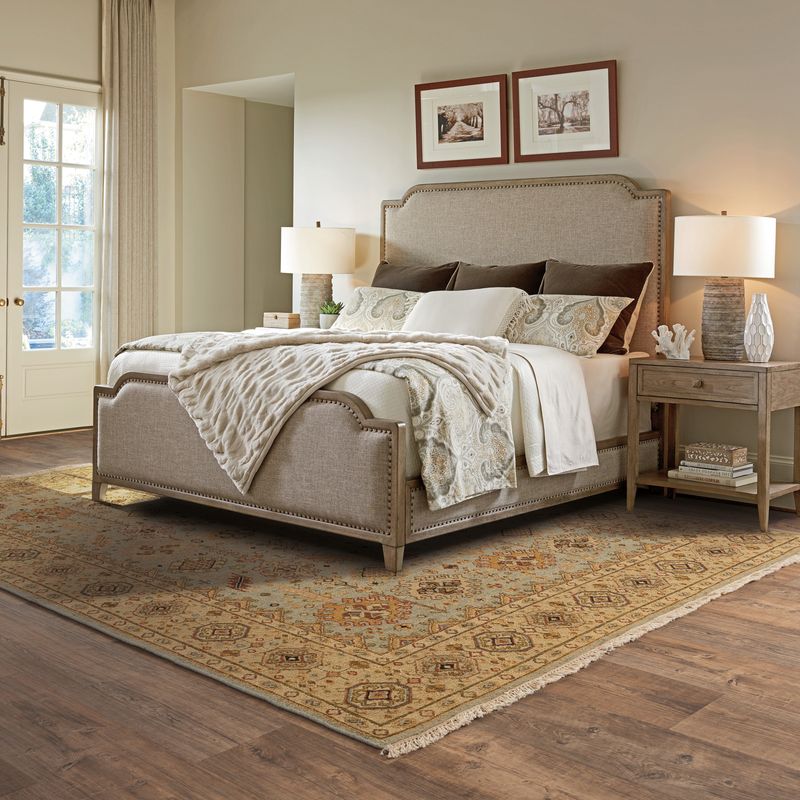
Always center your rug under the room’s main focal point—usually your bed. Misalignment creates visual tension and makes the entire room feel off-balance. Measure from wall to wall, then position your rug so equal amounts extend on either side of your bed. Even a slight off-center placement will subconsciously bother you every time you enter the room.
3. Two-Thirds Rule

When budget constraints limit rug size, follow the two-thirds rule. Your rug should cover approximately two-thirds of the visible floor space around your bed to maintain proper scale. This creates a satisfying visual balance without breaking the bank on an oversized rug. Small rooms especially benefit from this approach, as it prevents the cluttered feeling that comes with too-large rugs.
4. Mind The Doorway Clearance
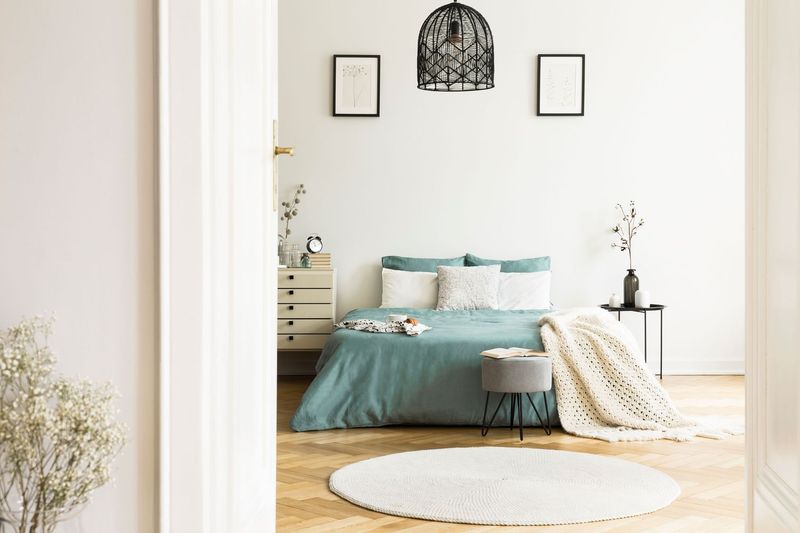
Never allow your bedroom rug to obstruct door clearance. Leave at least 18 inches of bare floor between any rug edge and doorways to prevent tripping hazards and awkward transitions. Door swing areas should remain rug-free. Nothing undermines bedroom tranquility like a door catching on your beautiful new rug—a design mistake that compromises both function and longevity.
5. Runner Rugs For Narrow Spaces
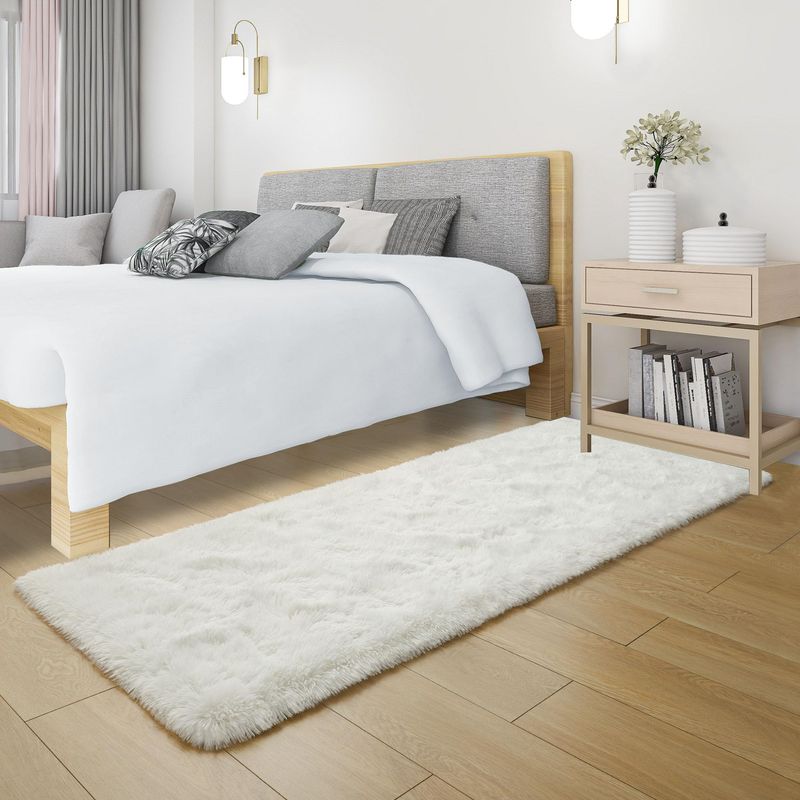
Long, narrow spaces beside beds call for runner rugs rather than forcing an oversized rectangle. A 2.5×8 foot runner perfectly frames the side of a king or queen bed while maintaining walkway functionality. Match runners on both sides of the bed for symmetry. The narrow profile prevents visual crowding in tight spaces while still providing the comfort and style benefits of a proper bedroom rug.
6. Partial Placement Strategy
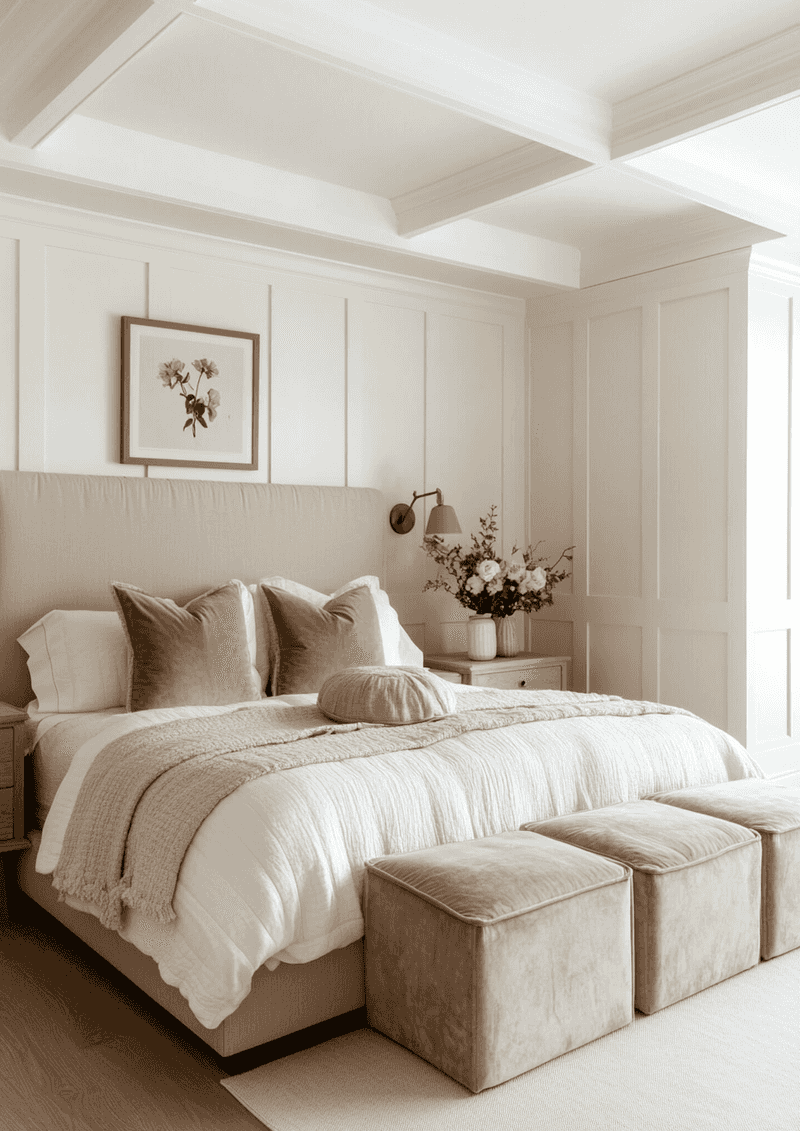
Consider placing the rug only under the lower two-thirds of your bed when working with smaller rugs or unusual room layouts. The rug should extend from just below the nightstands to beyond the foot of the bed. This approach works beautifully with bench seating at the bed’s end. Your morning routine benefits from the soft landing while maintaining visual interest without requiring an enormous budget.
7. Layer For Luxury
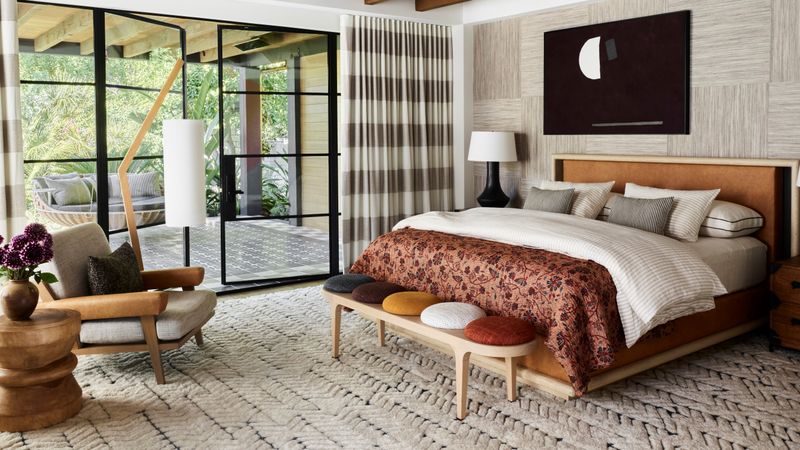
Layering a statement rug over neutral wall-to-wall carpeting adds dimension and luxury to bedroom floors. Choose a rug with contrasting texture or pattern to create visual interest against the carpet backdrop. The top rug should be approximately 2 inches thick to prevent awkward transitions. Natural fiber rugs like jute or sisal work exceptionally well as base layers under more luxurious smaller rugs.
8. Nightstand Positioning
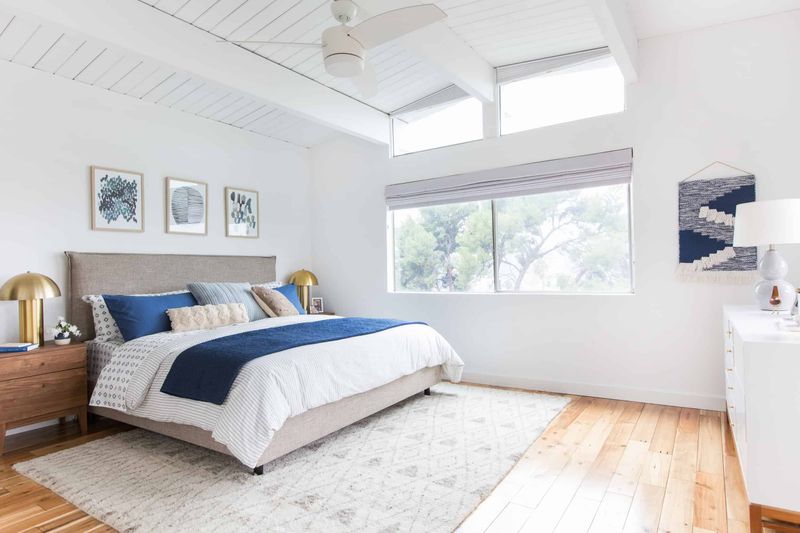
Nightstands should either sit completely on your bedroom rug or completely off it—never halfway. The half-on/half-off position creates visual discord and practical problems with stability. For most balanced designs, keep nightstands off the rug entirely. This creates a clean frame around your bed while ensuring furniture remains level and stable on the hard floor surface.
9. Honor The Architecture
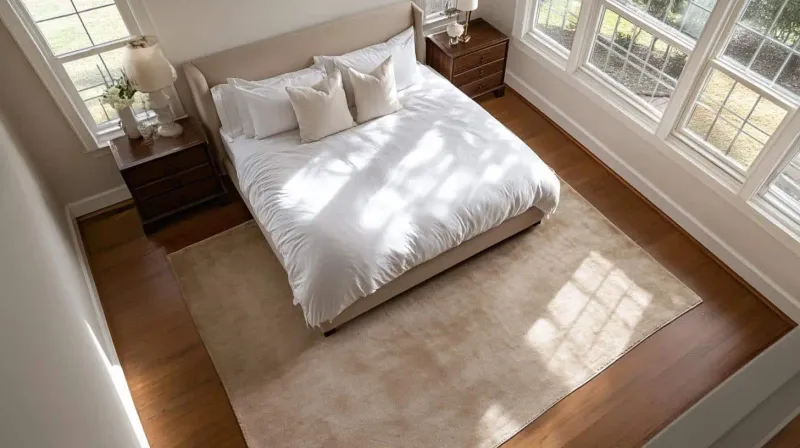
Align your rug with the architectural features of your bedroom. In rectangular rooms, position the rug parallel to the longest wall rather than angling it awkwardly. Bay windows, fireplaces, or built-ins should influence rug placement. Working with your room’s natural layout creates harmony and flow, while fighting against architectural lines creates visual tension that disrupts the bedroom’s restful atmosphere.
10. Seasonal Rotation System
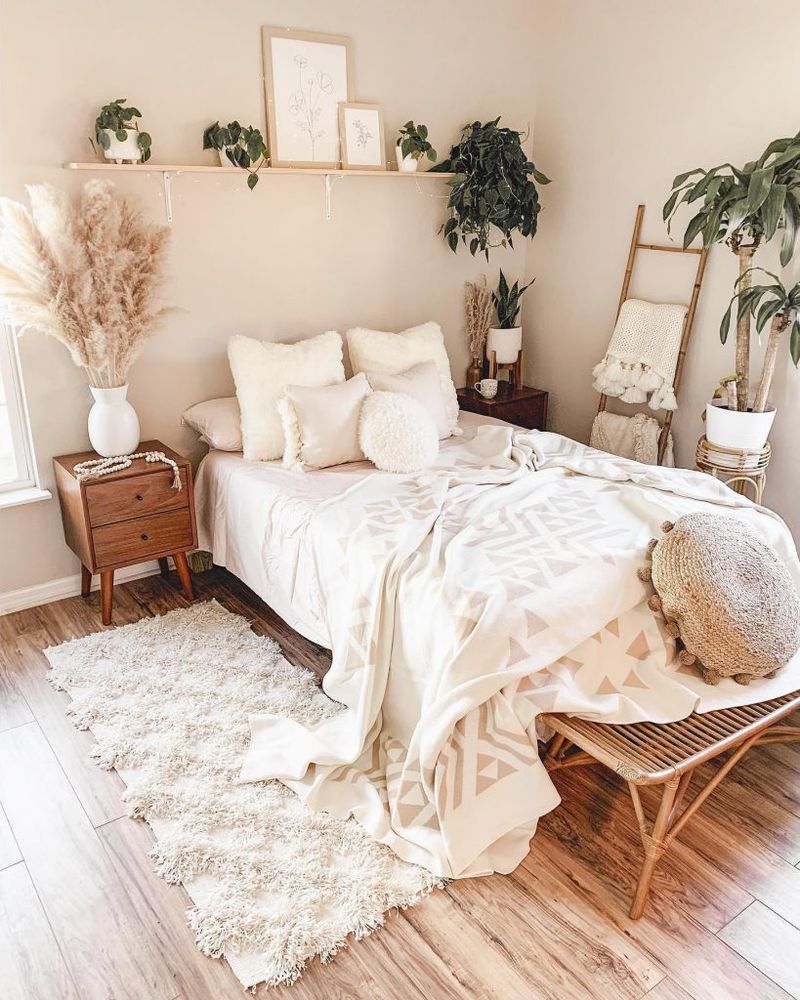
Implement a seasonal rotation system for bedroom rugs to extend longevity and refresh your space. Lighter, cooler materials like cotton or bamboo silk work beautifully in summer months. Switch to wool or high-pile options during winter for added warmth and comfort. This rotation prevents uneven wear patterns while giving you the practical benefits of appropriate textures for changing temperatures.
11. Respect The Rule Of Thirds

Apply the photographer’s rule of thirds to rug placement by dividing your bedroom floor visually into a grid. Position your rug to align with these intersection points rather than dead center in the room. This creates more dynamic visual interest than perfectly centered placement. The slight asymmetry draws the eye around the room in a pleasing way that feels intentionally designed rather than formulaic.
12. Size Up For Statement
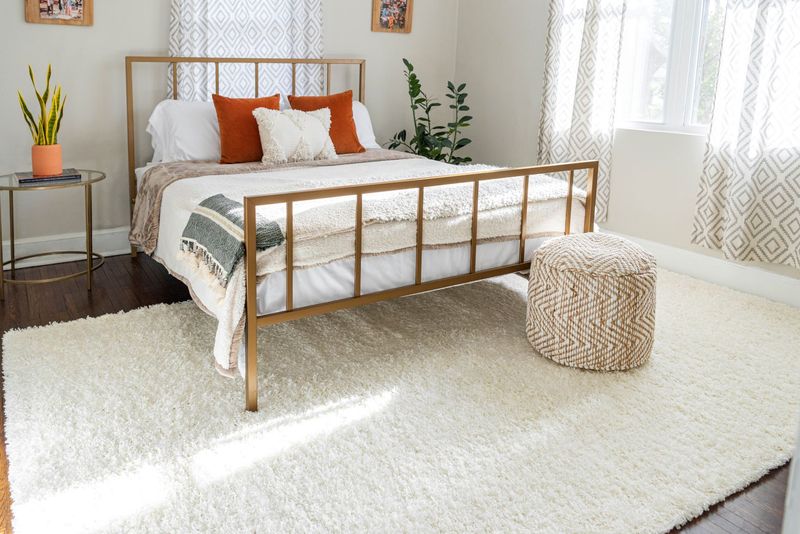
When making a statement with your bedroom rug, always size up rather than down. A rug that’s too small undermines even the most beautiful pattern or color. Bold designs need proper breathing room to shine. For patterned or colorful statement rugs, add an extra foot to standard size recommendations to ensure the pattern has adequate space to display its full beauty.
13. Create Conversation Areas
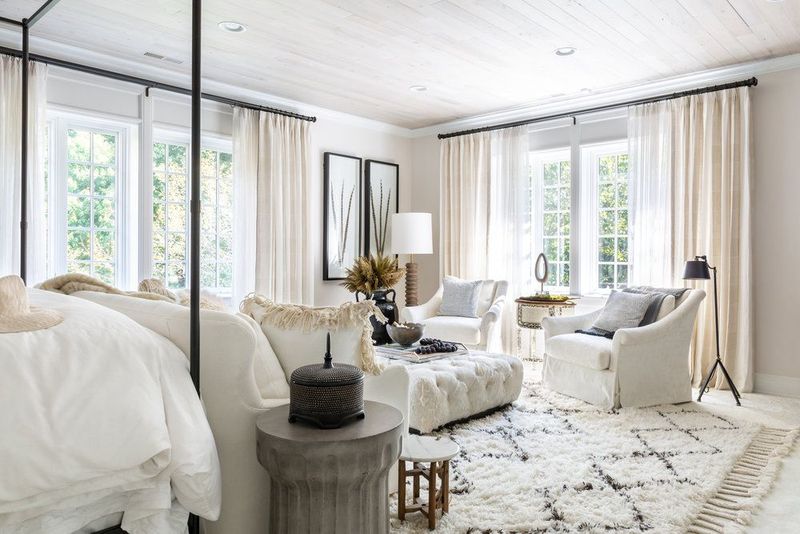
In larger primary bedrooms, use rugs to define conversation or sitting areas separate from the sleeping space. A 5×7 foot rug anchors a reading nook or seating arrangement perfectly. Ensure at least the front legs of all furniture in the conversation area rest on the rug. This creates a visual boundary that helps the brain recognize different functional zones within the same room.
14. Mind The Maintenance
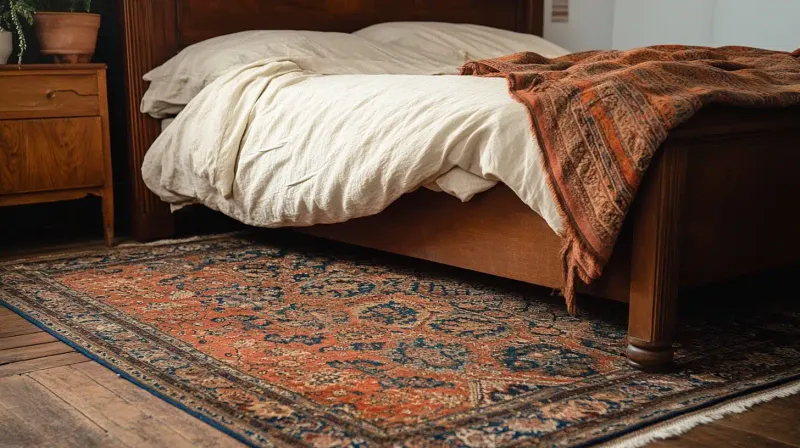
Consider cleaning requirements when positioning bedroom rugs. Allow at least 6 inches of clearance around bed frames to accommodate vacuum cleaners without moving furniture. High-traffic paths should feature low-pile rugs with tight weaves. Save the luxurious high-pile options for under-bed areas where they’ll stay cleaner longer and require less frequent maintenance.
15. Balance Visual Weight

Balance your bedroom’s visual weight by positioning rugs to counteract heavy furniture. In rooms with substantial wooden bed frames, float the rug slightly toward lighter elements like windows or seating areas. Think of your rug as the fulcrum of a see-saw, helping to distribute visual mass evenly. This subtle adjustment prevents the room from feeling lopsided or awkwardly weighted toward one side.

